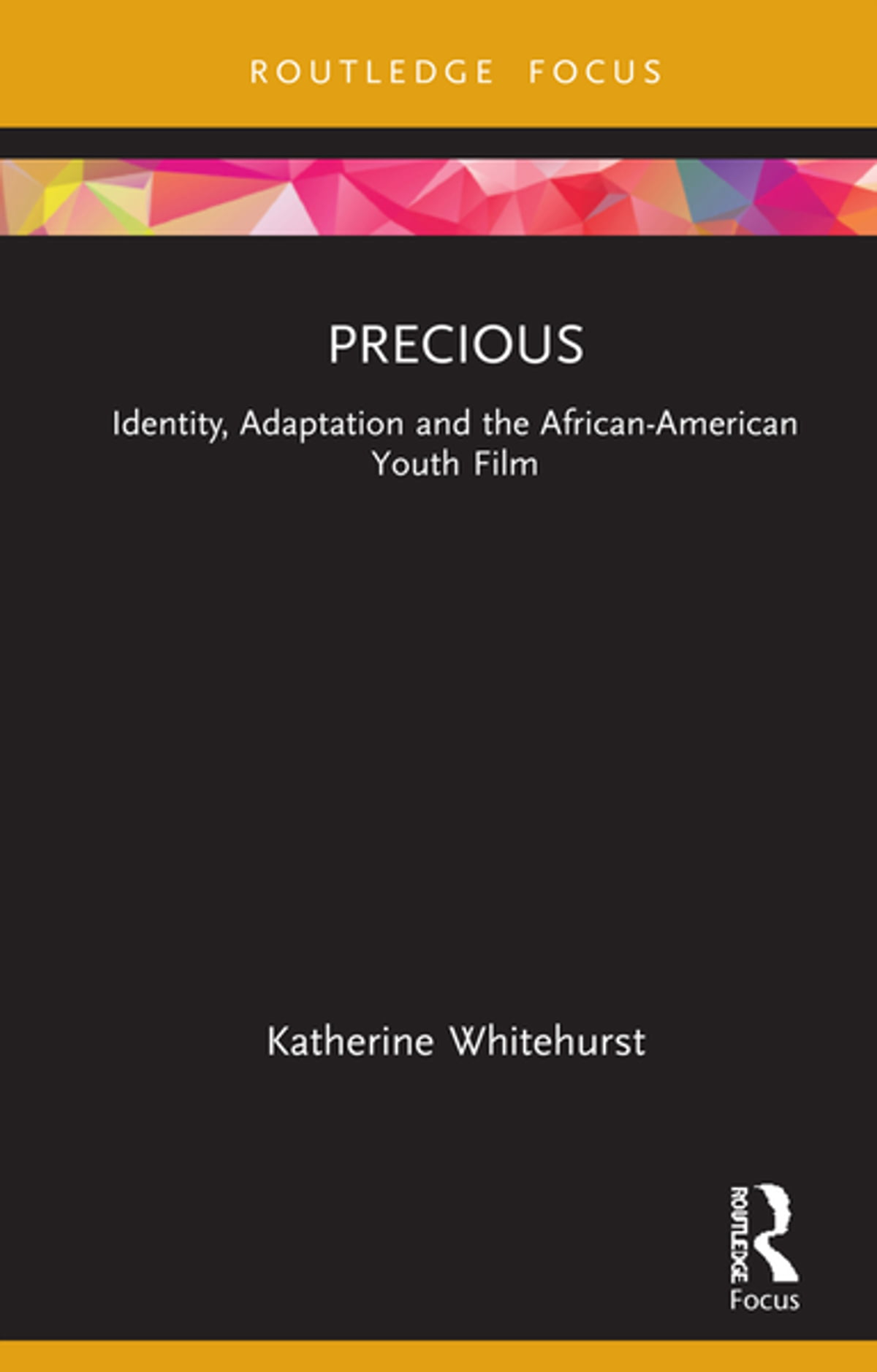When Lee Daniels’ film Precious: Based on the novel “Push” by Sapphire was released to theaters in 2009, the reactions were mixed. White audiences loved the bold, gritty realism of the film, which won numerous awards. But the Black community was split between anger at Daniels blatant use of negative stereotypes, or charmed by the film’s humanizing and sensitive portrayal of an obese inner-city black teen struggling to find acceptance and a hopeful future. In Precious: Identity, Adaptation, and the African-American Youth Film, Katherine Whitehurst offers a richly detailed look at the film’s coming-of-age narrative and its intersections with poverty, blackness, whiteness, girlhood, violence, and education.
Whitehurst first outlines her own academic interest in Precious, as well as acknowledging her position as a white Canadian woman who enjoys privilege, a positioning that allows the reader to ‘judge [her] findings’ (6) within the context of the author’s subject position and academic knowledge. Whitehurst’s first chapter explores the adaptation of Precious, highlighting key aspects of the novel that were left out of the film, particularly Precious’ sexual abuse by her mother. Whitehurst pointedly avoids discussion of fidelity to the novel in favor of close examination of where, and why, the film and novel merge and where they separate. She establishes a framework for applying Linda Hutcheon’s A Theory of Adaptation (2006) to Lee Daniels’ process of moving Precious from novel to film. It is through that lens that Whitehurst takes a close look at the way the film negotiates the many forms of violence in the novel, which are much less graphic in the film. Whitehurst points out how Daniels tends to elide the traumatic sexual abuse Precious experiences that appear in graphic detail in the novel. And while Daniels is limited by the film rating system from presenting the most graphic abuse—an NC-17 rating would have severely reduced distribution and availability to a teen audience—there are clever ‘hints’ of this abuse which astute viewers can pick up on. Whitehurst discusses how Daniels seems to focus more heavily on visually highlighting Precious’ imaginative attempts to escape moments of abuse through colourful and upbeat cut-away, dream-like scenes in which Precious is seen smiling, dancing, singing, and hanging on the arm of a handsome, light-skinned man. Whitehurst also makes the case that the film masks many of the controversial social criticisms that appear in the novel, thereby weakening its message. For example, Whitehurst explains that Daniels’ filming of a shadowy Carl on top of Precious in a darkened room limits the audience’s experience by denying them an understanding of her ‘bodily experiences and feelings’ of being raped which are made explicit in the novel (16).
In chapter 2, Whitehurst discusses the genre of the ‘youth film.’ She argues that Precious both adheres to some parts of the genre and deviates in others. She presents a thorough background on the youth film’s common narratives about coming-of-age, sexuality, autonomy, challenges to authority, and teen interactions with cultural institutions, in this case the welfare system. She points out that these common narratives are often limited to white, Western, middle-class families, to the exclusion of any other childhoods. Whitehurst makes clear the lack of coming-of-age films that feature girlhoods of colour, and explains that when they do appear they are often located in the inner-city with all of the stereotypical themes of crime, drugs, and violence. Whitehurst suggests that Precious ‘sets itself against the generic makeup of the youth film’ intentionally, especially outside of the typical white western framework, and ‘constructs expectations and norms for an imagined African-American girlhood’ (34). Whitehurst explores Precious’ depiction of the ‘savior teacher’ and the film’s affirmation of the ‘natural’ desire for heterosexual romance. Whitehurst concludes the chapter with an insightful discussion of Precious’ navigation of state institutions, i.e., schools and the welfare system, both of which fail her.
In chapter 3, Whitehurst looks at how Precious depicts girlhood and explores the myths about black girls. She spends a bit of time interrogating the notion of the child, particularly how black children in film are shown as less innocent than white children. Precious relies on those age-old stereotypes about black girlhood and, as Whitehurst explains, ‘the audience is given a sense of the heroine’s childhood, and how she was treated and perceived as a (non)child’ (56) throughout her young life.
Chapter 4 offers a well-rounded assessment of the film’s critical reception. Whitehurst surveys a wide variety of articles and reviews about Precious, pointing out the prevalence of ‘universalising discourse and discussions of race’ that inhabit many of the popular culture responses to the film (68). Indeed, Whitehurst surmises that the ‘universal narrative’ focus of many of the reviews only underscores mainstream media’s discursive racism in its response to Precious, which ‘serve to protect white privilege by denying the existence of racial inequality… [and] the need for institutional remedies’ (87). Whitehurst then presents an honest and insightful examination of the Black community’s conflicting reactions to Precious: that the film just reaffirms negative stereotypes about black women and girls, or that it should be praised for presenting a realistic portrayal of what some poor black girls experience.
Whitehurst concludes that the film’s success was not too surprising given its ideological project of reaffirming the pursuit of the middle-class American Dream. But as Whitehurst claims, Lee Daniels’ efforts to ‘lighten the film’s tone soften[ed] [the original novel’s criticism of] its broader social politics” (98) which lessened the film’s impact as social commentary. Whitehurst suggests that the film’s focus on education allows it to take its place in the youth film genre, in many ways ‘break[ing] down racial barriers’ (100) that have dominated the genre. As this volume effectively demonstrates, Precious is a cinematic text that continues to convey socio-cultural significance across disciplines.
Competing Interests
The author has no competing interests to declare.

